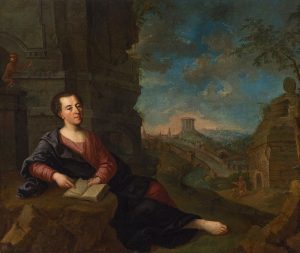From Italy to Britain
 Winckelmann and the spread of neoclassical taste
Winckelmann and the spread of neoclassical taste
The one way for us to become great, perhaps inimitable, is by imitating the ancients
These are the words German art historian and archaeologist Johann Joachim Winckelmann (1717 – 1768) wrote in his 1755 Thoughts on the Imitation of Greek Works in Painting and Sculpture. He wrote this work before journeying to Rome: like many antiquarians of his day he first learned about the Classics through immersion in literature. In Germany he also encountered the souvenirs—coins, gems and figurines—that Grand Tourists and other travellers brought north from visits to Italy. Once in Rome Winckelmann began to study the remains of Greek, Graeco-Roman and Roman art on a larger scale. Through personal contacts and writings, Winckelmann influenced generations of scholars, aesthetes, collectors, craftsmen and artists both within and beyond Italy. He inspired others to imitate both the spirit and forms of antiquity in their own artistic productions, large and small.
You may browse the exhibit’s four sections or view each of them separately:
- Antiquity writ small
- Herculaneum and Pompeii
- British architectural and artistic responses
- Henning’s architectural sculpture in miniature
You may download a handlist of the exhibition, produced through the support of the Arts Committee, University of Reading.
This exhibition was curated by Katherine Harloe, Allan Hiscutt and Amy C. Smith, working in collaboration with the University of Reading Special Collections (UMASCS), with material generously loaned also by the University Art Collection (UoR), the Reading Museum and Art Gallery, and the British Museum. We are grateful to Erica Delbeque (Special Collections), Naomi Lebens (University Art Collection), Elaine Blake and Angela Houghton (Reading Museum) and Celeste Farge (British Museum) for their assistance.
